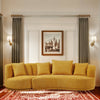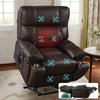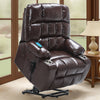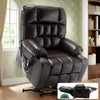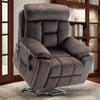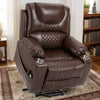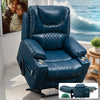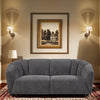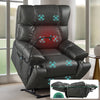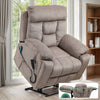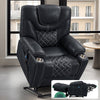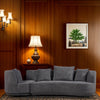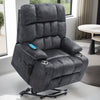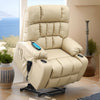Understanding Ergonomics: The Science Behind Comfortable Seating
The Role of Ergonomics in Furniture Design
Ergonomics plays a vital role in furniture design, especially for seating solutions. It focuses on creating products that fit the user's needs and body shape. Good ergonomic design can reduce discomfort and prevent long-term health issues.

When it comes to chairs, ergonomics considers factors like posture, support, and adjustability. A well-designed chair should support the natural curve of the spine. It should also allow for easy movement and reduce pressure points.
Ergonomic chairs often have features like adjustable seat height and lumbar support. These help users maintain proper posture and reduce strain on the body. The goal is to create seating that promotes comfort and health for long periods of use.
Ergonomic Principles for Various Age Groups
Ergonomic principles vary based on age groups due to different physical needs and limitations. For children, ergonomic chairs should promote good posture and support growth. They often have adjustable features to accommodate rapid changes in height.
Adults require chairs that support the lower back and promote proper alignment. These chairs often have features like adjustable armrests and seat depth. The goal is to reduce strain during long work hours.
For the elderly, ergonomic seating focuses on ease of use and support. Chairs for seniors often have higher seats and sturdy armrests to aid in sitting and standing. They also provide extra cushioning to prevent pressure sores.
Lift Recliner Chairs: A Guide to Elevating Elderly Care
How Lift Recliner Chairs Facilitate Ease of Movement
Lift recliner chairs are a game-changer for elderly care. They combine the comfort of a recliner with the functionality of a lift chair. These chairs use a powered lifting mechanism to tilt forward and raise, helping users stand up easily.

The lifting feature reduces strain on joints and muscles when getting up from a seated position. This is especially helpful for those with mobility issues or conditions like arthritis. Users can control the chair's movement with a simple remote control.
Many lift recliners also offer multiple reclining positions. This allows users to find the most comfortable position for relaxing, reading, or watching TV. Some models even have a full lay-flat position for napping.
Safety Features and Comfort Benefits for the Elderly
Lift recliner chairs come with several safety features designed for elderly users. Most have a backup battery system to ensure the lift function works even during power outages. This prevents users from being stuck in a reclined position.
Many models have side pockets to keep essentials like remote controls and phones within easy reach. This reduces the need for stretching or bending, which can be risky for some seniors. Some chairs also have anti-tip mechanisms for added stability.
Comfort is a key benefit of lift recliners. They often feature plush cushioning and soft upholstery for extended comfort. Many models offer heat and massage functions to soothe aching muscles and improve circulation. These features can greatly enhance the quality of life for elderly users.
Innovative Seating Options for the Elderly: Beyond Lift Recliners
Adjustable Beds and Comfortable Sleep Solutions
While lift recliners are great for daytime use, adjustable beds offer comfort and support for nighttime. These beds allow users to adjust the head and foot positions for optimal comfort. This can help with issues like acid reflux, snoring, and poor circulation.

Many adjustable beds come with features similar to lift recliners. These include massage functions, built-in nightlights, and USB charging ports. Some models even have a "zero gravity" position that reduces pressure on the spine.
For those who spend a lot of time in bed, pressure-relieving mattresses are crucial. These mattresses distribute weight evenly to prevent bedsores. Memory foam and latex options are popular for their contouring abilities and durability.
Balancing Act: Furniture Design That Supports Elderly Mobility
Beyond chairs and beds, other furniture pieces can also support elderly mobility. Balance is key in designing spaces that are both safe and functional for seniors. This often means combining aesthetics with practical features.
Tables and desks with rounded edges reduce injury risk from accidental bumps. Adjustable-height tables can accommodate users whether they're standing, sitting, or using a wheelchair. Sturdy furniture with good weight distribution helps prevent tipping.
Storage solutions should be easily accessible without requiring bending or reaching. Pull-out drawers and cabinets with large handles are good options. In the bathroom, grab bars and shower seats provide essential support for daily tasks.
Flooring choices also play a role in supporting mobility. Non-slip surfaces reduce fall risks. Transition strips between different flooring types should be low-profile to prevent tripping. Good lighting throughout the home is crucial for safe navigation.
By considering these factors, we can create living spaces that support independence and quality of life for the elderly. From lift recliners to thoughtfully designed furniture, ergonomic solutions can make a big difference in daily comfort and safety.







